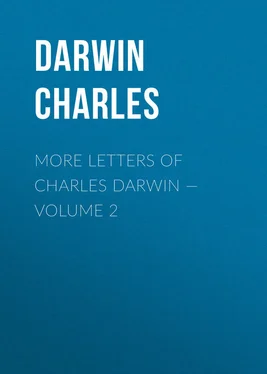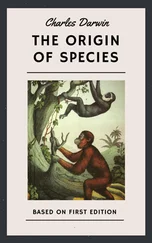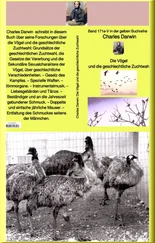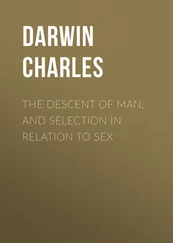Charles Darwin - More Letters of Charles Darwin — Volume 2
Здесь есть возможность читать онлайн «Charles Darwin - More Letters of Charles Darwin — Volume 2» — ознакомительный отрывок электронной книги совершенно бесплатно, а после прочтения отрывка купить полную версию. В некоторых случаях можно слушать аудио, скачать через торрент в формате fb2 и присутствует краткое содержание. Жанр: foreign_antique, foreign_prose, на английском языке. Описание произведения, (предисловие) а так же отзывы посетителей доступны на портале библиотеки ЛибКат.
- Название:More Letters of Charles Darwin — Volume 2
- Автор:
- Жанр:
- Год:неизвестен
- ISBN:нет данных
- Рейтинг книги:5 / 5. Голосов: 1
-
Избранное:Добавить в избранное
- Отзывы:
-
Ваша оценка:
- 100
- 1
- 2
- 3
- 4
- 5
More Letters of Charles Darwin — Volume 2: краткое содержание, описание и аннотация
Предлагаем к чтению аннотацию, описание, краткое содержание или предисловие (зависит от того, что написал сам автор книги «More Letters of Charles Darwin — Volume 2»). Если вы не нашли необходимую информацию о книге — напишите в комментариях, мы постараемся отыскать её.
More Letters of Charles Darwin — Volume 2 — читать онлайн ознакомительный отрывок
Ниже представлен текст книги, разбитый по страницам. Система сохранения места последней прочитанной страницы, позволяет с удобством читать онлайн бесплатно книгу «More Letters of Charles Darwin — Volume 2», без необходимости каждый раз заново искать на чём Вы остановились. Поставьте закладку, и сможете в любой момент перейти на страницу, на которой закончили чтение.
Интервал:
Закладка:
I do not, however, at all think the question can be settled by individual cases, but by only large masses of facts. The colours of the mass of female birds seem to me strictly analogous to the colours of both sexes of snipes, woodcocks, plovers, etc., which are undoubtedly protective.
Now, supposing, on your view, that the colours of a male bird become more and more brilliant by sexual selection, and a good deal of that colour is transmitted to the female till it becomes positively injurious to her during incubation, and the race is in danger of extinction; do you not think that all the females who had acquired less of the male's bright colours, or who themselves varied in a protective direction, would be preserved, and that thus a good protective colouring would soon be acquired?
If you admit that this could occur, and can show no good reason why it should not often occur, then we no longer differ, for this is the main point of my view.
Have you ever thought of the red wax-tips of the Bombycilla beautifully imitating the red fructification of lichens used in the nest, and therefore the FEMALES have it too? Yet this is a very sexual-looking character.
If sexes have been differentiated entirely by sexual selection the females can have no relation to environment. But in groups when both sexes require protection during feeding or repose, as snipes, woodcock, ptarmigan, desert birds and animals, green forest birds, etc., arctic birds of prey, and animals, then both sexes are modified for protection. Why should that power entirely cease to act when sexual differentiation exists and when the female requires protection, and why should the colour of so many FEMALE BIRDS seem to be protective, if it has not been made protective by selection.
It is contrary to the principles of "Origin of Species," that colour should have been produced in both sexes by sexual selection and never have been modified to bring the female into harmony with the environment. "Sexual selection is less rigorous than Natural Selection," and will therefore be subordinate to it.
I think the case of female Pieris pyrrha proves that females alone can be greatly modified for protection. (450/1. My latest views on this subject, with many new facts and arguments, will be found in the later editions of my "Darwinism," Chapter X. (A.R.W.))
LETTER 451. A.R. WALLACE TO CHARLES DARWIN.
(451/1. On October 4th, 1868, Mr. Wallace wrote again on the same subject without adding anything of importance to his arguments of September 27th. We give his final remarks: — )
October 4th, 1868.
I am sorry to find that our difference of opinion on this point is a source of anxiety to you. Pray do not let it be so. The truth will come out at last, and our difference may be the means of setting others to work who may set us both right. After all, this question is only an episode (though an important one) in the great question of the "Origin of Species," and whether you or I are right will not at all affect the main doctrine — that is one comfort.
I hope you will publish your treatise on "Sexual Selection" as a separate book as soon as possible; and then, while you are going on with your other work, there will no doubt be found some one to battle with me over your facts on this hard problem.
LETTER 452. TO A.R. WALLACE. Down, October 6th {1868}.
Your letter is very valuable to me, and in every way very kind. I will not inflict a long answer, but only answer your queries. There are breeds (viz. Hamburg) in which both sexes differ much from each other and from both sexes of Gallus bankiva; and both sexes are kept constant by selection. The comb of the Spanish male has been ordered to be upright, and that of Spanish female to lop over, and this has been effected. There are sub-breeds of game fowl, with females very distinct and males almost identical; but this, apparently, is the result of spontaneous variation, without special selection. I am very glad to hear of case of female Birds of Paradise.
I have never in the least doubted possibility of modifying female birds alone for protection, and I have long believed it for butterflies. I have wanted only evidence for the female alone of birds having had their colour modified for protection. But then I believe that the variations by which a female bird or butterfly could get or has got protective colouring have probably from the first been variations limited in their transmission to the female sex. And so with the variations of the male: when the male is more beautiful than the female, I believe the variations were sexually limited in their transmission to the males.
LETTER 453. TO B.D. WALSH. Down, October 31st, 1868.
(453/1. A short account of the Periodical Cicada (C. septendecim) is given by Dr. Sharp in the Cambridge Natural History, Insects II., page 570. We are indebted to Dr. Sharp for calling our attention to Mr. C.L. Marlatt's full account of the insect in "Bulletin No. 14 {NS.} of the U.S. Department of Agriculture," 1898. The Cicada lives for long periods underground as larva and pupa, so that swarms of the adults of one race (septendecim) appear at intervals of 17 years, while those of the southern form or race (tredecim) appear at intervals of 13 years. This fact was first made out by Phares in 1845, but was overlooked or forgotten, and was only re-discovered by Walsh and Riley in 1868, who published a joint paper in the "American Entomologist," Volume I., page 63. Walsh appears to have adhered to the view that the 13- and 17-year forms are distinct species, though, as we gather from Marlatt's paper (page 14), he published a letter to Mr. Darwin in which he speaks of the 13-year form as an incipient species; see "Index to Missouri Entomolog. Reports Bull. 6," U.S.E.C., page 58 (as given by Marlatt). With regard to the cause of the difference in period of the two forms, Marlatt (pages 15, 16) refers doubtfully to difference of temperature as the determining factor. Experiments have been instituted by moving 17-year eggs to the south, and vice versa with 13-year eggs. The results were, however, not known at the time of publication of Marlatt's paper.)
I am very much obliged for the extracts about the "drumming," which will be of real use to me.
I do not at all know what to think of your extraordinary case of the Cicadas. Professor Asa Gray and Dr. Hooker were staying here, and I told them of the facts. They thought that the 13-year and the 17-year forms ought not to be ranked as distinct species, unless other differences besides the period of development could be discovered. They thought the mere rarity of variability in such a point was not sufficient, and I think I concur with them. The fact of both the forms presenting the same case of dimorphism is very curious. I have long wished that some one would dissect the forms of the male stag-beetle with smaller mandibles, and see if they were well developed, i.e., whether there was an abundance of spermatozoa; and the same observations ought, I think, to be made on the rarer form of your Cicada. Could you not get some observer, such as Dr. Hartman (453/2. Mr. Walsh sent Mr. Darwin an extract from Dr. Hartman's "Journal of the doings of a Cicada septendecim," in which the females are described as flocking round the drumming males. "Descent of Man" (1901), page 433.), to note whether the females flocked in equal numbers to the "drumming" of the rarer form as to the common form? You have a very curious and perplexing subject of investigation, and I wish you success in your work.
LETTER 454. TO A.R. WALLACE. Down, June 15th {1869?}.
You must not suppose from my delay that I have not been much interested by your long letter. I write now merely to thank you, and just to say that probably you are right on all the points you touch on, except, as I think, about sexual selection, which I will not give up. My belief in it, however, is contingent on my general belief in sexual selection. It is an awful stretcher to believe that a peacock's tail was thus formed; but, believing it, I believe in the same principle somewhat modified applied to man.
Читать дальшеИнтервал:
Закладка:
Похожие книги на «More Letters of Charles Darwin — Volume 2»
Представляем Вашему вниманию похожие книги на «More Letters of Charles Darwin — Volume 2» списком для выбора. Мы отобрали схожую по названию и смыслу литературу в надежде предоставить читателям больше вариантов отыскать новые, интересные, ещё непрочитанные произведения.
Обсуждение, отзывы о книге «More Letters of Charles Darwin — Volume 2» и просто собственные мнения читателей. Оставьте ваши комментарии, напишите, что Вы думаете о произведении, его смысле или главных героях. Укажите что конкретно понравилось, а что нет, и почему Вы так считаете.












